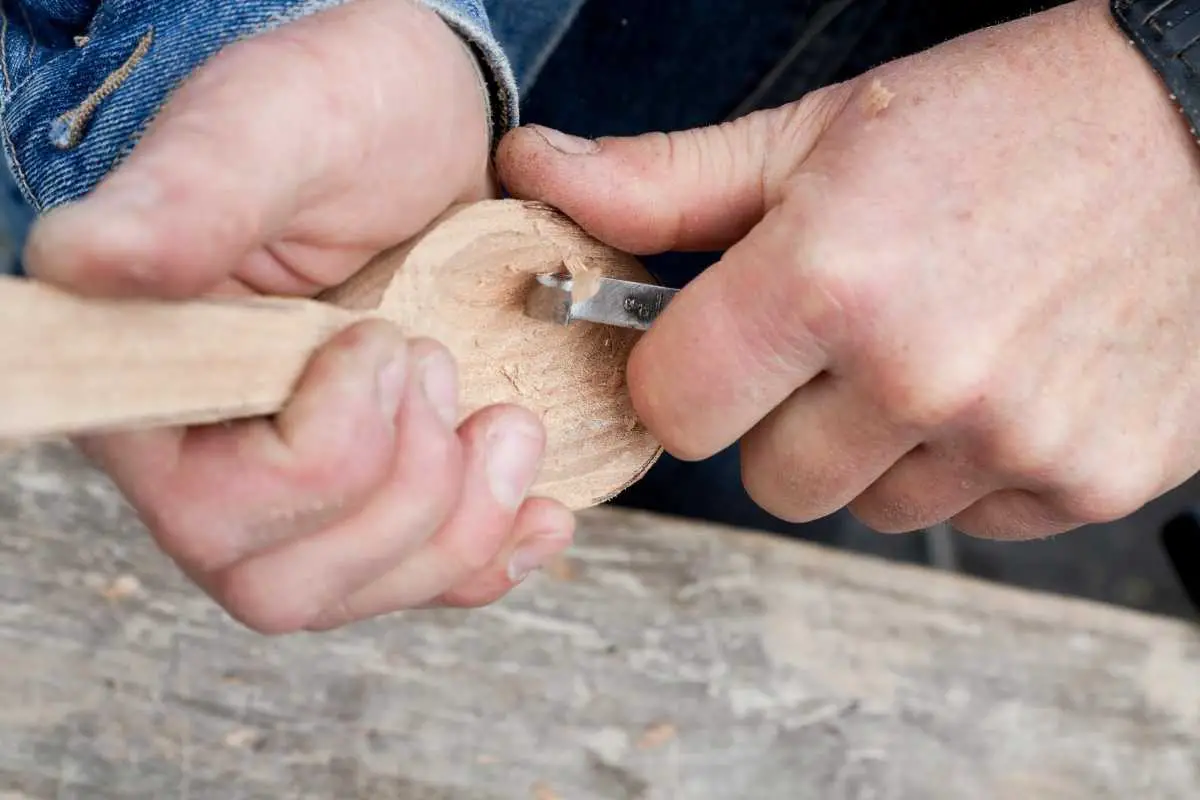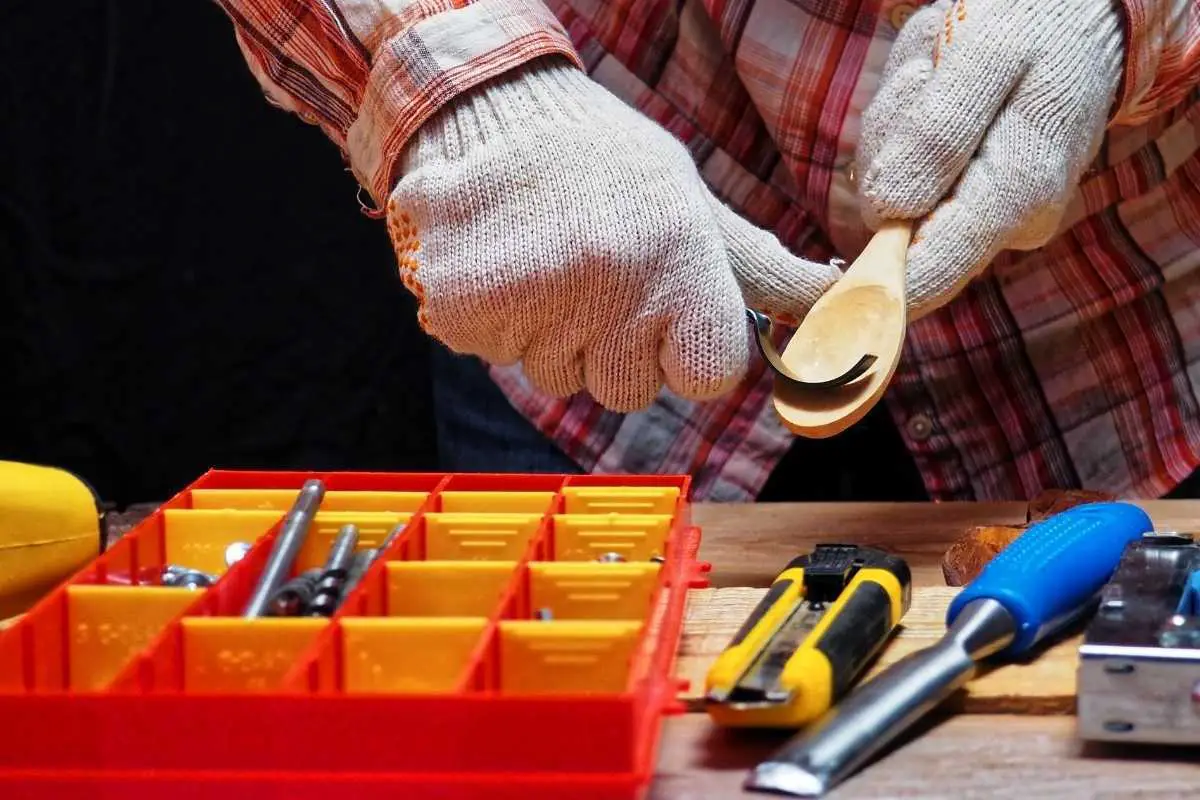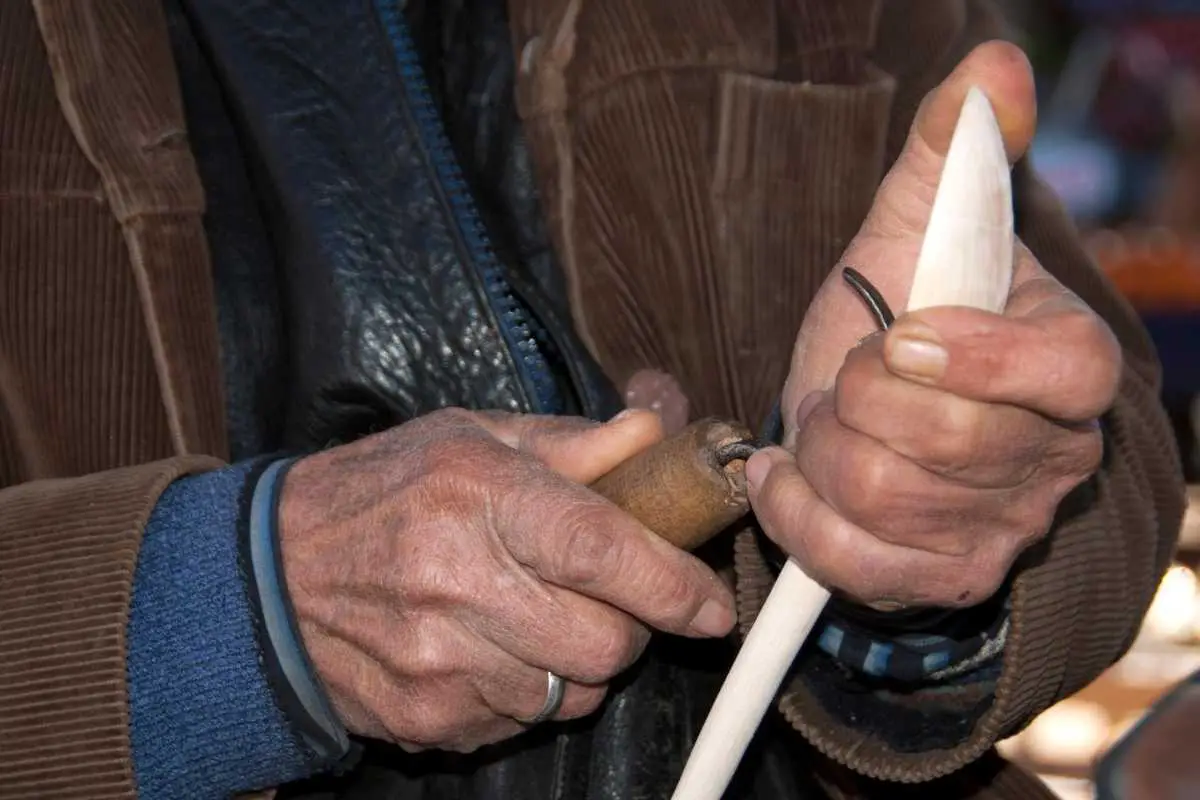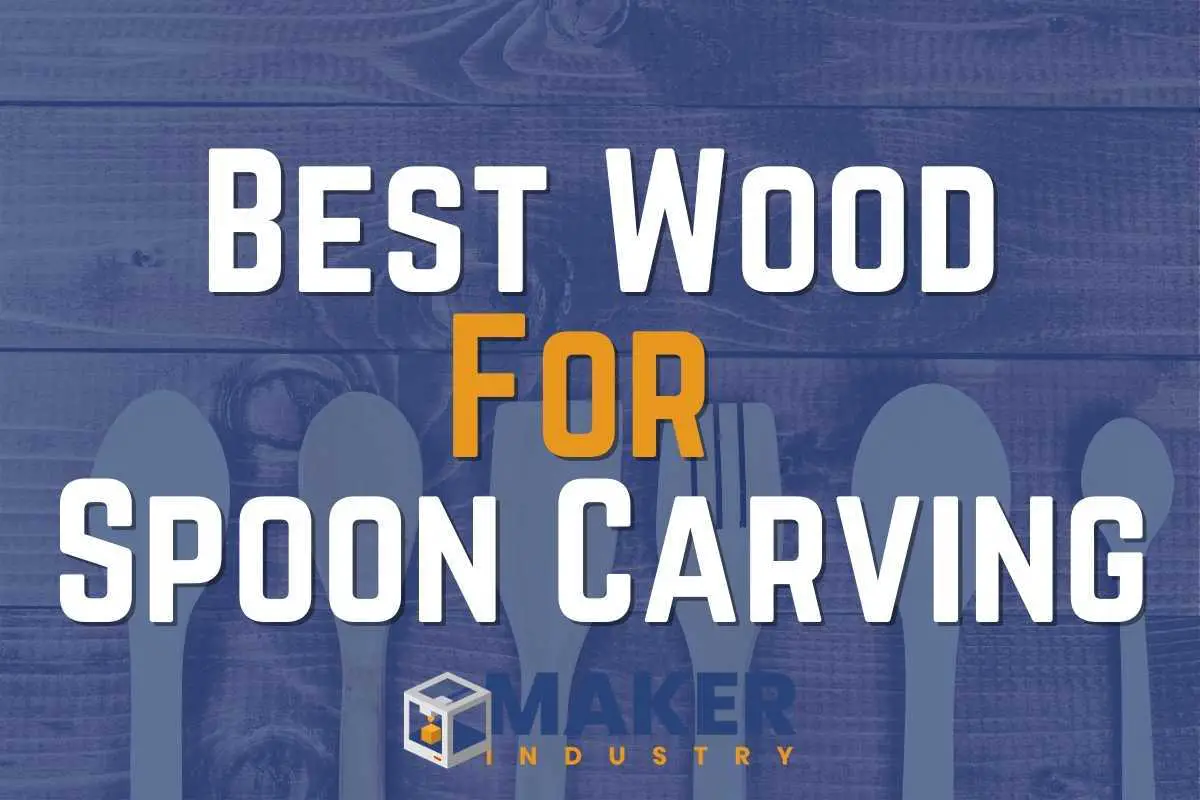It’s always important to have the best type of wood when carving spoons and other projects. Also, depending on the wood, carving spoons from green wood is easier than carving spoons from dry wood. So a lot depends on your skill level and the design of the spoon you intend to carve when choosing what works best for your project.
When you are first starting out, look for the softest of the hardwoods to make nice serving and cooking spoons and then move on to harder woods like birch and maple as you gain more experience. Also, look for straight and clean grained wood and save the wood with twists and knot bends until you have more carving experience. Here are a few tips and wood reviews to help you find the best wood for carving spoons.
Best Wood for Carving Spoons
If you aren’t really sure where to start, you can always purchase spoon carving blanks. Spoon carving blanks are blocks of wood that you can purchase in different types of wood that are ready for you to start your carving projects. They are an easy way to try out different types of wood and get the hang of your new skill. So let’s take a look at the best wood for spoons.
1. Paper Birch
Paper birch is a really nice wood for carving. This common tree is easy to identify by its white bark. Known as a pioneer specie, it grows quickly where land’s been disturbed and also has a short life span, so you don’t feel as bad having it cut down.
Paper birch has the best level of hardness that is needed for carving spoons. It is easy to shape using a hand tool, but it’s also tough enough to withstand use in a kitchen.
2. Silver Maple
Silver maple is common to the US and has a great maple smell. It crossbreeds with red maple, so it can be difficult to tell exactly the wood that you have, particularly if there aren’t leaves around. However, either of them works just as well for carving spoons.
With a fresh and sweet scent, silver maple is often referred to as soft maple, but it’s not really a soft wood. The name is referring to the fact that it loses branches easily in high winds or is used as a counter reference to sugar maple, which is often called hard maple.
With a gorgeous grain, silver maple can delicately catch the light. Usually, you will find a ripple grain somewhere in silver maple, which can add beauty to your spoon, but can also make it difficult to achieve a lovely tool finish.
3. Black Cherry
Black cherry trees can grow over 100 feet tall. These massive trees are larger in the US than in other countries. It provides a gorgeous pink heartwood that has a nice contrast against the light cream color of the sapwood.
Over time, the heartwood can darken to more of a reddish-brown, however, it’s contrast with the sapwood will not diminish. Both the sapwood and heartwood have a different texture after you carve them. The heartwood tends to feel more brittle while the sapwood has a thick and elastic quality.
4. Black Walnut
Black walnut is a very desirable wood that is often used in cabinetry and veneers. With walnut, you won’t need the larger pieces of wood. Instead, if you focus on the crown wood from locally cut walnut, you will get some beautiful pieces to carve. To get the knots out of walnut we recommend using a jack plane.
In comparison, the sapwood tends to be too pale while the heartwood is too dark brown. Black walnut can have a strong smell to it, which may add some flavor. However, this will stop over time, and you can always use linseed oil to overpower it.
5. Apple
One of the hardest woods available, apple wood typically has a twisted grain and comes full of knots. With a warm color that is more understated than walnut and cherry, this light brown wood has a subtle color difference from the sapwood to the heartwood. And, since this is pretty dense wood, you get a nice heavy utensil. Plus, with the complications of the twisted grain and knots, you can pull out some gorgeous pieces.
6. Poplar
Poplar is another great hardwood choice that can easily be purchased at your local hardware store or lumber yard. Poplar is a beautiful yellowish-green tint to its grain and can make a beautiful spoon when stained or when oil is applied to it.
7. Soft Maple
When it comes to easy-to-carve wood, it doesn’t get much easier than soft maple. Like pine and basswood, it is a very easy to carve wood that is great for beginners that are just getting into wood carving. One of the best wood for beginners when carving spoons.
Choosing Wood for your Wooden Spoon Carving Project

Function
When you carve a spoon only to be presented as an art piece or sculpture, you should choose a wood that features an unusual form, grain, or color. Finding vintage wood with an aged exterior can make a beautifully carved spoon. However, if the spoon you are carving is going to be used in a kitchen, then you will want to consider denser hardwoods like maple, pear, apple, and birch. Due to their weight or gravity per cubic inch when dried, they have a low moisture content and generally make great kitchen utensils.
You should keep in mind that not all hardwoods are good to use for spoons that will be used in the kitchen. Poplars like Aspen will not work well since they are a soft hardwood and have low gravity, so they won’t be able to withstand everyday use. Other open grained woods like ash and oak are also not good choices since the wood grain has open pores that can retain oil, fat, and food, which can turn rancid even after they are washed.
Form
Look for wood that is thick enough to be used as a deep serving spoon or ladle or is thin enough to be used to make a butter paddle so you don’t have to carve down a large piece of wood. Keep in mind that a thin design will work best with a dense and hardwood like pear or maple.
Also look at the grain direction. When you carve a bend into a piece of wood with a straight grain, you will cause the spoon to have a weak structure if you aren’t careful. When you want to carve a bend into your design, look for wood that has a grain that can follow that form.

Defects
Always check for defects when looking for spoon wood. It’s important to keep an eye out for missing knots, large open cracks, rotten spots, beetle or termite channels, and discoloration that is due to spalt. Keep in mind that no one will want to see any of these things in the spoon serving their food.
Wood Grain
Within one tree, there are several different wood grain patterns. For instance, in the bottom part of a big maple tree, you will find grain compression that can look like rippling water if the spoon is carved and finished correctly. Where the main part of the trunk starts to separate in a Birch or Maple tree are some incredible areas to carve, plus they are best to carve when they are green due to their constantly changing grain direction.
What wood should a new carver use to start with?
Basswood is a nice hardwood that is still soft and easy to carve. Other woods that are great for beginners are alder and birch since they are easy to carve and less fibrous. As you begin carving, worry less about the type of wood you are using and just experiment with wood that you have handy. This is a great way to learn what types of wood work well and also allows you to see how the spoons you carve hold up over time. Just make sure to use something that is food safe and that isn’t something like pallet-board wood or pressure-treated wood.
Should you use seasoned or green wood?
Usually, a spoon carver will use freshly cut or green wood since it will have a higher amount of moisture in it. Typically, carving spoons from green wood is easier with hand tools since it has softer fibers. And, there will be times when you will have to carve a spoon to a rough dimension before letting it dry for a short amount of time. Once it is dried, you can return to finish the spoon.
Keep in mind that it may be difficult to get green hardwoods, but a seasoned wood is easy to get at a store. However, carving spoons from dry wood can be hard with hand tools such as chisels and carving knives. Also, sometimes when you use seasoned wood, power tools have to be used to accelerate the carving process.
How to personalize a wood Spoon with an Engraving
There’s nothing quite like a unique and personal take on a wooden object or gift. It really adds a great personal touch, so we recommend engraving your wooden spoon whether it’s the name of your brand or the person you are giving it to.
There are a lot of different ways to engrave a wooden spoon, but the one we recommend is hand engraving. Since you are already carving your spoon by hand, we think that it would great to go ahead and engrave it while you are at it. If you are new to engraving then you are in luck because we have the complete guide to the art of wood engraving and how-to-guide available for you to read.
What to look for in the best wood for spoon carving?

Usually, you want to look for closed or finer grain hardwoods since they are more durable. You should also look for wood with no knots and straight grain that make stronger and easier to carve spoons. The best wood for spoon carving will have the grain run the length of the spoon. You can easily learn how to carve a spoon with our ultimate wood carving guide.
As you gain more experience, you may want to experiment with different wood types and branch out to a serving spoon or ladle. At this point, you can try a green wood with a branch that will leave a handy crook in the wood, which is great for specific spoon designs.
Experimenting with a spoon that is part hardwood and sapwood can help to create an artistic look to a spoon. The design you choose for your spoon will play a large roll in selecting which wood to use. Every spoon is unique and special, which is not only a reflection on you but on the wood that was given to us by nature.


